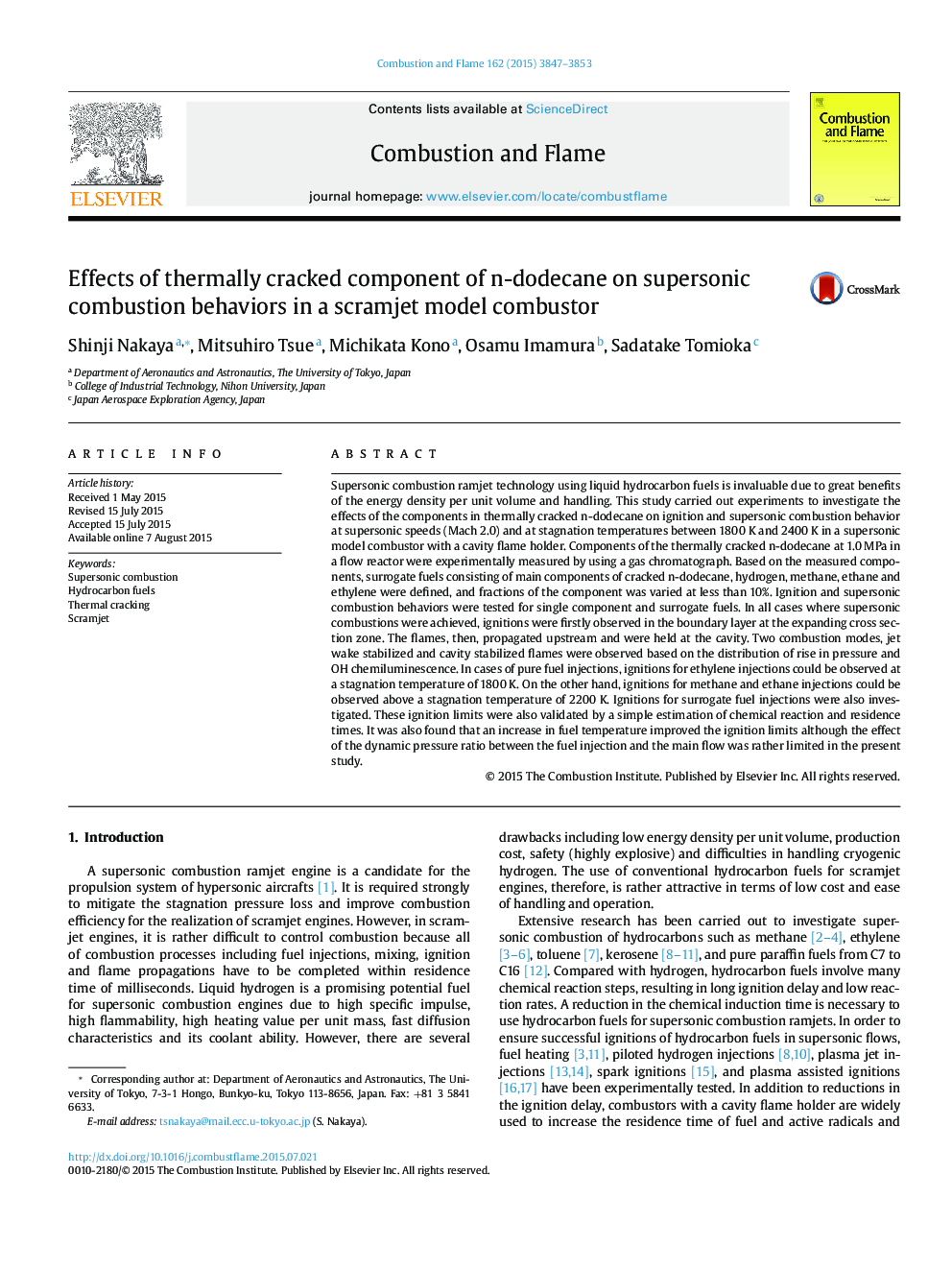| کد مقاله | کد نشریه | سال انتشار | مقاله انگلیسی | نسخه تمام متن |
|---|---|---|---|---|
| 10264777 | 458013 | 2015 | 7 صفحه PDF | دانلود رایگان |
عنوان انگلیسی مقاله ISI
Effects of thermally cracked component of n-dodecane on supersonic combustion behaviors in a scramjet model combustor
دانلود مقاله + سفارش ترجمه
دانلود مقاله ISI انگلیسی
رایگان برای ایرانیان
کلمات کلیدی
موضوعات مرتبط
مهندسی و علوم پایه
مهندسی شیمی
مهندسی شیمی (عمومی)
پیش نمایش صفحه اول مقاله

چکیده انگلیسی
Supersonic combustion ramjet technology using liquid hydrocarbon fuels is invaluable due to great benefits of the energy density per unit volume and handling. This study carried out experiments to investigate the effects of the components in thermally cracked n-dodecane on ignition and supersonic combustion behavior at supersonic speeds (Mach 2.0) and at stagnation temperatures between 1800Â K and 2400Â K in a supersonic model combustor with a cavity flame holder. Components of the thermally cracked n-dodecane at 1.0 MPa in a flow reactor were experimentally measured by using a gas chromatograph. Based on the measured components, surrogate fuels consisting of main components of cracked n-dodecane, hydrogen, methane, ethane and ethylene were defined, and fractions of the component was varied at less than 10%. Ignition and supersonic combustion behaviors were tested for single component and surrogate fuels. In all cases where supersonic combustions were achieved, ignitions were firstly observed in the boundary layer at the expanding cross section zone. The flames, then, propagated upstream and were held at the cavity. Two combustion modes, jet wake stabilized and cavity stabilized flames were observed based on the distribution of rise in pressure and OH chemiluminescence. In cases of pure fuel injections, ignitions for ethylene injections could be observed at a stagnation temperature of 1800Â K. On the other hand, ignitions for methane and ethane injections could be observed above a stagnation temperature of 2200Â K. Ignitions for surrogate fuel injections were also investigated. These ignition limits were also validated by a simple estimation of chemical reaction and residence times. It was also found that an increase in fuel temperature improved the ignition limits although the effect of the dynamic pressure ratio between the fuel injection and the main flow was rather limited in the present study.
ناشر
Database: Elsevier - ScienceDirect (ساینس دایرکت)
Journal: Combustion and Flame - Volume 162, Issue 10, October 2015, Pages 3847-3853
Journal: Combustion and Flame - Volume 162, Issue 10, October 2015, Pages 3847-3853
نویسندگان
Shinji Nakaya, Mitsuhiro Tsue, Michikata Kono, Osamu Imamura, Sadatake Tomioka,